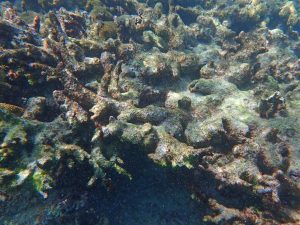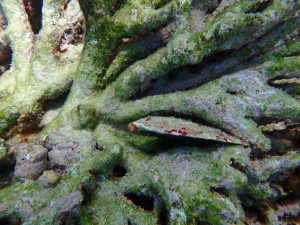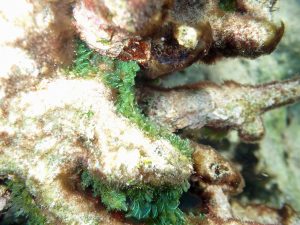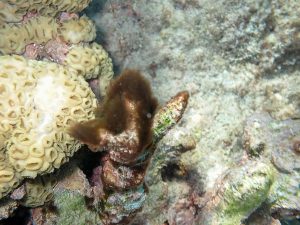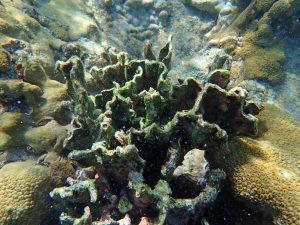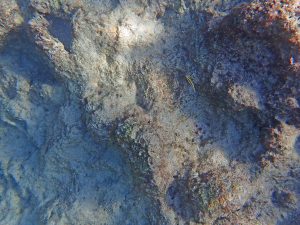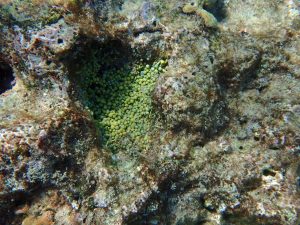Navigation
Barbados Fringing Reefs & Seagrass Beds
— Obs I
— — The Acroporoids
— — — A prolifera
— — — — Epiphytes etc on recently dead A.prolifera (This Page)
Every A. prolifera colony observed (19 separate colonies plus the Mother Colony complex) was heavily epiphytized when viewed on Jan 12, and subsequently early in 2024, in marked contrast to the last prior views on April 3, 2023. (See photos on this page.) I assume that the A. prolifera – also A. cerviconis and A. palmata – was killed by an extreme warming/coral bleaching event in 2023, but as yet have not been able to locate any details of when those occurred in Barbados. Dead A cervicornis is similarly heavily epiphytized -see iNaturalist photos, also specimens of A. palmata that were totally dead in early 2024, but not in 2023, e.g., view this example from A. palmata in nearshore MPA north of Vauxhall: Breakwaters Green epiphytes are most abundant on the A. palmata specimens.
Also shown below are Millepora sp. in the Mother Colony that were evidently killed in 2023, presumably by the same warming events, and are now heavily epiphytized. From Williams & Bunkley-Williams (2000):
Coral-reef bleaching apparently reduces the resistance of Caribbean fire corals (Millepora spp.) to a fungal associate living in the skeleton of fire corals. This agent attacks the living tissues of fire coral and kills them. This agent was discovered in the Florida Keys (87), but probably occurs throughout the Caribbean Region.
Ref 87: Te Strake D, Jaap C, Truby E, Reese R. Fungal elements in Millepora complanata Lamarck, 1816 (Cnidaria: Hydrozoa) after mass expulsion of zooxanthellae. Fla Sci 1988;51:184-188.

